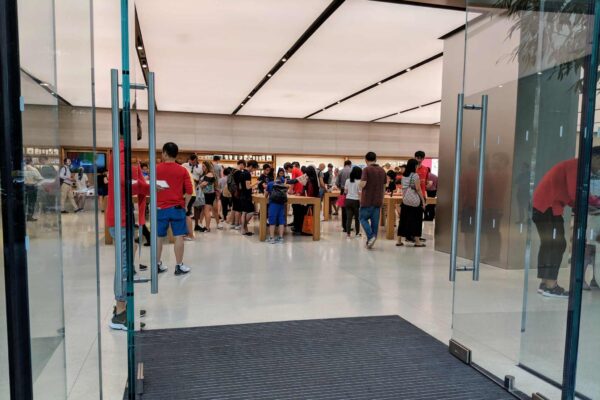
Apple products always seem to be priced at a premium, but most of the time, I find that they can be somewhat justified. It’s getting hard to do that with exorbitant iPhone prices. But I think the just announced US$999 monitor stand takes the cake.
On 3rd June 2019, during Apple’s WWDC 2019 developer conference, Apple announced a brand new Apple Pro Display XDR monitor that sells from US$4,999. It’s expensive. At that price, you’d assume you would get a complete, working, monitor. But no. That is the price for the new monitor on its own, without any stand. The stand itself sells for US$999.
That’s right. You could buy the new iPhone Xs at that price. Or, you could just bring home a really very expensive monitor stand.
You could get your own monitor stand to use with the new Apple Pro Display XDR. You can get the same functionality at a much lower price, for sure, but not before you fork out US$199 for a VESA mount adapter.
That moment, around 11:40 am Pacific Daylight Time (6:40 pm UTC), at WWDC 2019 when the monitor stand’s exorbitant price was flashed on the screen, the audience reactions tell it all. I think Apple fans felt betrayed.
If Apple can get away with a US$999 monitor stand this year, then why not US$999 for some other clearly-needed accessory for another product next. The matte finish option on the Apple Pro Display XDR, by the way, would be an extra US$1,000.
As a long time Mac user who started to more to Windows early last year, I’m feeling a little relieved. I’m glad to have made the move. Windows-land isn’t without problems. However, I’ve increasingly felt Apple’s alienation towards their users, especially users like me.
You see, I use a Mac, but I’m not quite what you’d call an Apple fan, and I’m hardly invested in the Apple ecosystem. I don’t use an iPhone, or iPad, or Apple Watch. I don’t get music or other content from iTunes. Basically, I only just used the Mac. Apple wants their users to be heavily invested. Just the Mac isn’t good enough. Apple wants users like me to use more of their products and services.
Take for example other announcements at this year’s WWDC. Apple introduced a new Sidecar app that lets you use an iPad as a secondary display to the Mac. There are third party apps to use other devices as a secondary display. Apple, basically, wants you to use an iPad.
Increasingly, many new features in Mac have all been about integration between macOS and iOS. Continuity, Universal Clipboard, and Internet Sharing, among others, are all really very nice, provided you use an iPhone with a Mac. I don’t use an iPhone. These options are not available to Android mobile device users.
This is all, no doubt, Apple’s overarching strategy to lock in their users. The tight integration within the ecosystem can be a good thing in terms of delivering better functionality and usability benefits to end-users. However, this also means that users are held hostage to the whims and fancies of the company. Apple can make you pay for a rather useless Touch Bar simply because you want Touch ID or a better spec MacBook Pro. You simply don’t have other options.
Meanwhile, Apple makes Mac Pro that are so bad they have been forced to apologise. Let’s also not forget the continued reliability problems with MacBook Pro keyboards. Design and quality controls are going down.
Fortunately, I decided to reduce my reliance on Apple the moment they announced the deprecation of Aperture. iTunes, incidentally, is also being deprecated, one of the revelations at WWDC 2019.
The signs have been there in recent years. Everything from planned product obsolescence and unnecessarily difficult product repairs are not just not consumer friendly, but downright morally questionable practices. Apple has perfectly legitimate explanations for everything they are doing. However, I can’t help wondering if there’s really more to it that we don’t know about.
Meanwhile, I’d love to understand how does a monitor stand cost US$999.
